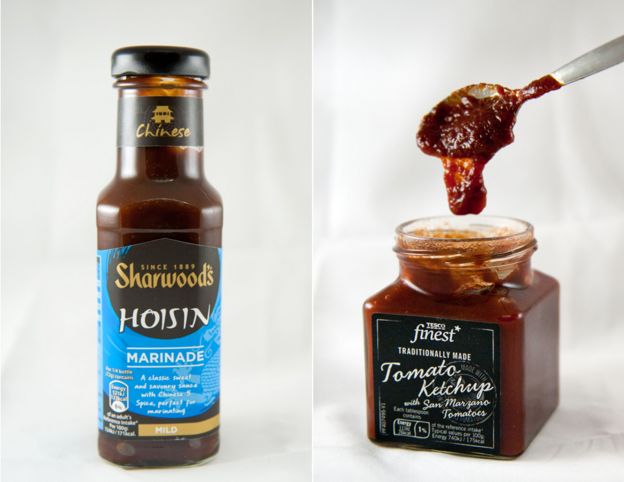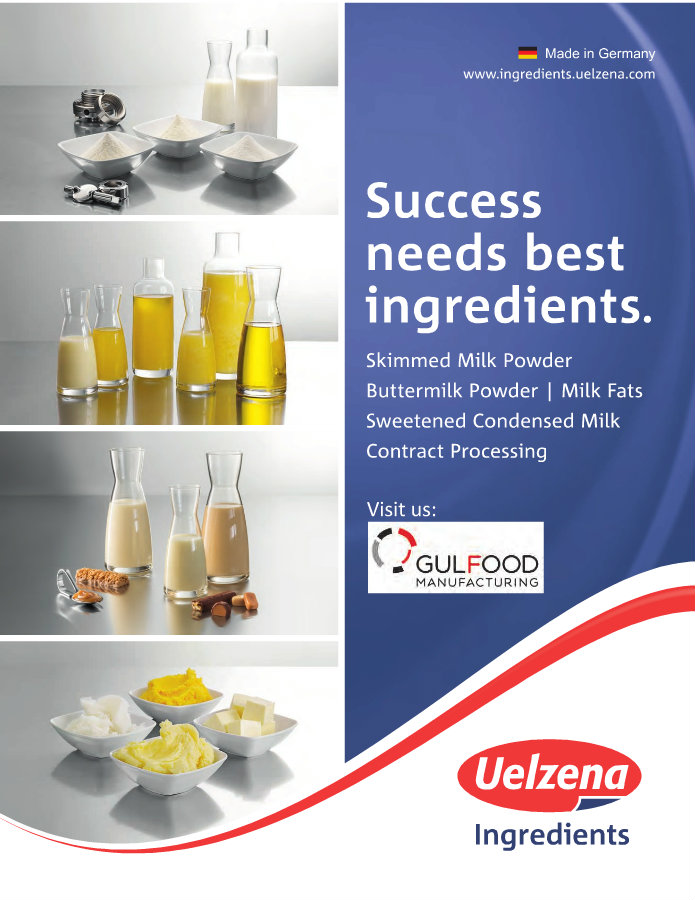
There's growing concern over too much added sugar in soft drinks, but there's also added sugar in many savoury foods. Why?
Mars Food, owner of the Dolmio sauces brand,made waves when it said some of its products should be consumed only once a week because of a high sugar, salt or fat content.
Some of the UK's cooking sauces and condiments contain percentages of sugar comparable to, or even higher than, those in ice cream and biscuits.
One brand of ketchup - Tesco Finest - contains 38.1g of sugar per 100g. That's higher than the 34g in every 100g of Belgian chocolate sauce from the same Tesco range.
"Our food is clearly labelled with its nutritional content so customers can make informed choices about what to buy," says a Tesco spokesman, who adds that the supermarket has "removed thousands of tonnes of salt, fat and sugar from the food we sell", including its own-brand sauces.
| Condiments - grams of sugar per 100g/100ml | |
|---|---|
| Tesco Finest Tomato Ketchup | 38.1 |
| Tiptree Tomato Sauce | 31 |
| Branston Hot Dog Relish | 29.6 |
| Colman's Classic Mint Sauce | 25 |
| Daddies Tomato Ketchup | 24 |
| HP Sauce | 23.1 |
| Heinz Tomato Ketchup | 22.8 |
| Sainsbury's Tomato Ketchup | 21.6 |
| Hellmann's Tomato Ketchup | 19 |
| Lea And Perrin's Worcestershire Sauce | 18.8 |
| Tesco Tomato Ketchup | 18.1 |
| Heinz Salad Cream | 17 |
| Colman's Tartare Sauce | 15 |
| Colman's Original English Mustard | 13 |
| Hellmann's Salad Cream | 13 |
It might be argued ketchup - as a condiment - is something designed to be used only sparingly but there are many cooking sauces and ready meals that have surprisingly high sugar contents.
The National Health Service describes any product containing more than 22.5g of sugar per 100g as having a "high" level, while anything below 5g is "low".
This also puts HP Sauce (23.1g per 100g) and Heinz tomato Ketchup (22.8g per 100g), among others, in the high-sugar category.

What about cooking sauces? There is 33.9g of sugar per 100g in Sharwood's Hoisin Marinade Sauce. This equates to 24.4g per recommended 72g serving.
The recommended maximum daily amount of sugars for a person over the age of 11 is 90g. No more than 30g of this should be added sugar - as opposed tonaturally occurring sugars, such as those in fruit and milk.
| Cooking sauces - grams of sugar per 100g/100ml | |
|---|---|
| Sharwood's Hoisin Marinade Sauce | 33.9 |
| Levi Roots Reggae Reggae Cooking Sauce | 25.7 |
| Tesco Kung Po Sauce | 20.8 |
| Sharwood's Szechuan Kung Po Cooking Sauce | 19.9 |
| Tesco Finest Black Bean Cooking Sauce | 17.4 |
| Loyd Grossman Korma Sauce | 8.9 |
| Ragu Red Sauce For Lasagne | 7.6 |
| Ragu Smooth Bolognese Pasta Sauce | 7.2 |
| Patak's Mild Korma Sauce | 6.8 |
| Dolmio Bolognese Chunky Mushroom Pasta Sauce | 6.6 |
| Dolmio Tomato Red Lasagne Sauce | 6.4 |
| Loyd Grossman Tomato Roasted Garlic Pasta Sauce | 6.3 |
| Dolmio Original Bolognese Sauce | 5.8 |
| Homepride Pasta Bake Tomato And Pepperoni | 5.1 |
| Loyd Grossman Tomato And Basil Sauce | 4.8 |
| Tesco Everyday Value Pasta Sauce | 2.3 |
But a spokeswoman for Sharwood's parent company, Premier Foods, says the hoisin sauce is not designed for consumption "every day" and the high level of sugar is "clearly labelled". As it is a marinade, rather than a pour-on sauce, less of it ends up in the finished meal, she adds.
The company, which also makes Homepride and Loyd Grossman products, has previously focused more on reducing salt levels, cutting its usage by 40 tonnes over five years, she says, adding: "We are looking at reducing sugar levels, but our first priority is the products that we know people use more frequently."

Levi Roots Reggae Reggae Cooking Sauce (25.7g per 100g) also comes into the high-sugar category. The Dolmio products looked at by the BBC do not. In fact, some are not far above the low-sugar threshold of 5g per 100g.
Of course, the amounts of sauces people use when cooking varies, some using above and some below the manufacturers' recommendations. But one area of concern is ready meals when people tend to eat an entire portion.
| Ready meals | Sugar in grams |
|---|---|
| Asda Chinese Sweet and Sour Chicken with Egg Fried Rice 400g | 27 |
| Sainsbury's Crispy Sweet and Sour Chicken With Rice 400g | 26.6 |
| Sainsbury's Chicken Tikka Masala With Rice 500g | 23.2 |
| Sharwood's Sweet and Sour Chicken With Rice 375g | 21.8 |
| Tesco Healthy Living Caribbean Chicken and Rice 400g | 21.7 |
| Uncle Ben's Rice Time Microwave Ready Meal Sweet and Sour 300g | 18.5 |
| Asda World Favourites Mango Chicken 410g | 18 |
Many other ready meals have far lower levels, but why do we have so much sugar in some "main courses"?
"Often we take sugar into our bodies but don't recognise it as sugar, mistaking it for more savoury tastes," says Barry Smith, founder of the University of London's Centre for the Study of the Senses.
Sugar acts as a balance to the bitterness or sourness of other flavours, such as salt or spices, which means the sweetness isn't tasted but still gives the body the effects of a "sugar rush", just as foods such as chocolate do. So some savoury foods are having the same effect on the body as sweet ones, and causing similar cravings, but with a different taste.
"The brain's saying 'Give me more like that'," says Smith. "It's getting lots of sugar without you actually knowing, so is less able than when eating sweets to say 'I've had enough. Stop now.' It's morally dubious that so much sugar is in things that people don't know or recognise from their tasting. We don't allow ourselves the freedom to choose. It's slightly surreptitious."

Consumers should "keep in mind" portion sizes - the amount of sauce that will need to be added to pasta or other products as part of a daily meal - not just percentages, when trying to control sugar levels, says Ada Garcia, lecturer in public health nutrition at Glasgow University. Active people with high energy requirements will have different needs to others, she adds.
But people don't always make rational judgements when eating. If nutrients "were the only determinants of food intake, the recent problems of overeating and obesity would be hard to explain", Per Moller, associate professor of food science at Copenhagen University, has argued.
The general advice to those trying to cut down on sugar when cooking and eating at home is simple - read the label.




